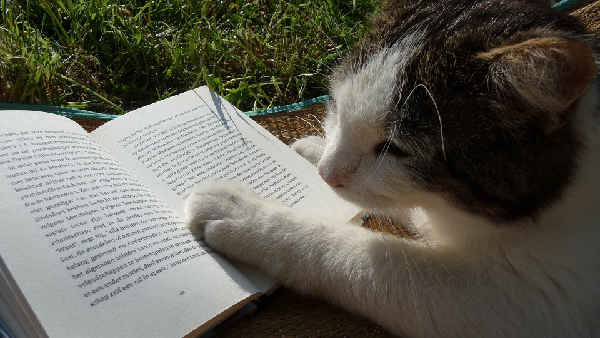Guest Post By: Emma Lawson
Recently, many people and constitutions have implemented reading clubs, in which children read books to animals, as a way of promoting literacy among youngsters and creating a valuable bond between children and their pets. This is the general idea:
The Goal
The programs are designed as a two-way idea that would help both children and animals simultaneously. The idea began a couple of years ago in different locations and with a different purpose. Certain programs were made as therapy sessions in schools for children who are mentally undeveloped, because the furry companions managed to create a relaxing and stress-free environment where children could practice learning. There have also been other programs focused solely on reading to abandoned animals in shelter homes, as a way of helping these furry friends get accustomed to people, their new environment and helping them get ready for a new home. The general idea is to encourage children to improve their literacy skills in a safe, non-threatening environment, all the while helping animals become more sociable.
What Are the Benefits?
There have been a lot of speculations about whether these programs are actually effective or not, and in what way can they benefit children and their pets. In a recent study, children were asked to read in front of three groups: adults, other children and, lastly, animals. Researchers have shown that stress levels of these children were significantly lower when reading to animals, presumably because pets make great listeners and actually provide excellent interactive feedback. This results in higher confidence levels in children, helps them develop their communication skills, motivation, and creativity but also the will to learn and develop further. Animals, on the other hand, can benefit from the mutual acceptance, feel encouraged to interact with their human buddies, and learn about the value of companionship.
Who Is It Intended for?
While these programs are not strictly limited to a specific group, they are generally designed for children aged 6 to 15. This is the period when children grow the most, not only physically, but emotionally and mentally as well. That is why this experience can greatly help them in their future development process, especially during this age period. On the other side, most people believe that these reading clubs are focused solely on dogs and cats. While there are a lot of initiatives for reading in dog and cat animal shelters, studies have shown that other animals (such as birds, hamsters and rabbits) can also be great reading buddies.
So Far So Good
A study conducted at the University of California has showed remarkable results – in terms of improving children’s literacy skills, confidence levels and class participation – in children who have spent 2 months reading to animals at least once a week. These programs are gaining global recognition and many people have been inspired to take the initiative in their own surroundings. Of course, if you are willing to start something on your own, Stefmar offers a wide array of pet supplies and advice about animals, that you could find useful in your new venture.
For centuries now, people have been spending their lives in the company of these furry friends, whose presence has made significant impact on our lifestyle. Dogs, cats, guinea pigs, rabbits and birds have become an integral part of our lives for a number of reasons. Not only do these animals count as loyal companions, but they are known to provide excellent comfort during hardship, protection in times of need and now they are even praised as amazing reading buddies.


